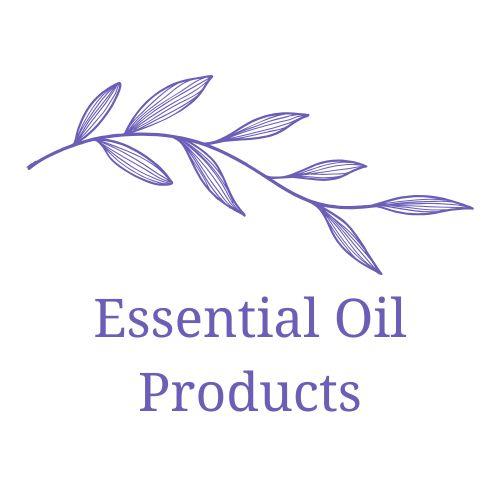Your cart is currently empty!
Complete Guide to Essential Oils: Benefits, Uses, and Safety
Complete Guide to Essential Oils: Benefits, Uses, and Safety
Essential oils have surged in popularity over the years, captivating the attention of wellness enthusiasts, holistic practitioners, and casual users alike. With their potent aromas and myriad applications, these concentrated extracts from plants contribute not only to sensory delight but also to overall well-being. This comprehensive guide delves into the fundamentals of essential oils, highlighting their benefits, varied uses, safety measures, and wellness applications.
Understanding Essential Oils
At their core, essential oils are highly concentrated plant extracts obtained through processes like steam distillation, cold pressing, or solvent extraction. Each oil captures the unique aroma and therapeutic properties of the source plant, making them valuable for a variety of uses. From lavender, renowned for its calming effects, to tea tree oil, praised for its antimicrobial properties, each essential oil offers a unique set of benefits.
Benefits of Essential Oils
The benefits of essential oils can be broadly categorized into three areas: aromatherapy, topical applications, and emotional health. Here, we explore some key advantages:
- Physical Health: Many essential oils possess anti-inflammatory, antimicrobial, and analgesic properties. For instance, peppermint oil is often used for relieving headaches, while eucalyptus oil can assist with respiratory issues.
- Mental Well-Being: The use of essential oils in aromatherapy can help elevate mood, alleviate stress, and improve sleep quality. Oils like chamomile and ylang-ylang are especially popular for promoting relaxation.
- Skin Care: Topical application of certain essential oils, when properly diluted, can support skin health. Oils like lavender and frankincense are known for their ability to rejuvenate and soothe the skin.
How to Use Essential Oils
There are several effective methods for using essential oils. Whether you’re a novice or have some experience, it’s crucial to understand the types of application:
Aromatherapy
Aromatherapy involves using essential oils through inhalation, typically with the help of a diffuser or oil burner. This method allows the volatile compounds to fragrance the air, creating an aromatic ambiance that can influence mood and health. Begin with a few drops of your chosen essential oil in a diffuser for a soothing experience.
Topical Application
Using essential oils on the skin can provide localized relief. However, direct application is generally discouraged. Instead, always remember to dilute essential oils with a carrier oil, such as coconut or jojoba oil, before applying them to the skin. A common dilution ratio is 1-2 drops of essential oil per teaspoon of carrier oil. Be mindful of sensitive areas, such as the face, and conduct a patch test first.
Top Essential Oils for Beginners
For those new to the world of essential oils, starting with versatile options can help build confidence in usage. Here’s a list of essential oils that are particularly friendly for beginners:
- Lavender: Widely recognized for its calming properties and versatility.
- Lemon: Uplifting and refreshing, great for cleansing and boosting mood.
- Peppermint: Excellent for energy boosts and relieving headaches.
- Tea Tree: Known for its antiseptic properties, perfect for skin care.
- Sweet Orange: Another uplifting oil that can alleviate stress and enhance mood.
Safety Best Practices
With the benefits of essential oils also comes the necessity for safe usage. Essential oils are potent and should be treated with respect. Here are some safety tips:
Dilution Ratios
Understanding dilution ratios is essential before applying any essential oil topically. Common practice recommends a dilution of 1% for facial applications (approximately 1 drop per teaspoon) and 2-5% for body applications. For children or sensitive individuals, a lower ratio is advisable.
Risks and Contraindications
While essential oils can be beneficial, they’re not without potential risks. Some oils may cause allergic reactions, skin irritation, or have contraindications with certain medications. Pregnant or nursing individuals, young children, or those with medical conditions should consult with a healthcare professional before using essential oils.
Storage and Shelf Life
Proper storage helps maintain the potency of essential oils. Store them in dark glass bottles away from direct sunlight and heat. Most essential oils have a shelf life of 1-3 years, but check for signs of degradation, such as changes in scent or texture.
Exploring Aromatherapy: A Comparison of Techniques
Aromatherapy offers various methods to experience the benefits of essential oils, primarily diffusing and topical application. While diffusing disperses the fragrance into the air and is effective for setting a pleasant atmosphere, topical application provides direct benefits to specific areas. Knowing when to use each method can enhance your experience significantly.
Embracing Essential Oils in Daily Life
The use of essential oils can seamlessly integrate into daily routines. Whether it’s adding a few drops of grateful lavender to your bath for relaxation or employing peppermint oil for a midday energy boost, these oils can enhance wellness. They can also be used in homemade cleaning products, skin care routines, and even culinary recipes.
Final Note: A Journey with Essential Oils
As you embark on your journey with essential oils, it’s essential to remain informed and cautious. The blend of their aromatic appeal and therapeutic properties can greatly enhance your quality of life when used responsibly. Always remember to start with small amounts, conduct patch tests, and educate yourself on each oil’s properties and potential interactions. With the right knowledge and respect for these powerful plant extracts, essential oils can be a delightful addition to your wellness toolkit.

Leave a Reply